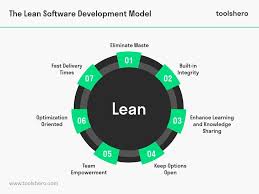The Agile Software Development Life Cycle (SDLC)
Agile Software Development Life Cycle (SDLC) is a methodology that emphasizes flexibility, collaboration, and iterative development. Unlike traditional SDLC models, such as Waterfall, Agile focuses on delivering working software in short iterations.
There are several key principles that guide the Agile SDLC:
- Iterative Development: Agile projects are divided into small increments, allowing for continuous feedback and improvement.
- Collaboration: Cross-functional teams work closely together to deliver high-quality software.
- Adaptability: Agile teams are able to respond to changes quickly and effectively.
- Customer Involvement: Customers are involved throughout the development process to ensure their needs are met.
The Agile SDLC typically consists of the following phases:
- Planning: Defining project scope, objectives, and requirements.
- Design: Creating a high-level design based on user stories and requirements.
- Development: Implementing features in short iterations known as sprints.
- Testing: Conducting thorough testing to ensure quality and functionality.
- Deployment: Releasing the software to customers or end-users.
- Evaluation: Gathering feedback and making improvements based on user input.
The Agile SDLC is known for its ability to adapt to changing requirements and deliver value quickly. By embracing collaboration, flexibility, and continuous improvement, Agile teams can create high-quality software that meets customer needs effectively.
Top 5 Frequently Asked Questions About Agile Software Development Life Cycle (SDLC)
- What is Agile Software Development Life Cycle (SDLC)?
- How does Agile SDLC differ from traditional SDLC models?
- What are the key principles of Agile SDLC?
- What are the typical phases of the Agile SDLC?
- How does customer involvement play a role in Agile SDLC?
What is Agile Software Development Life Cycle (SDLC)?
The Agile Software Development Life Cycle (SDLC) is a methodology that prioritizes adaptability, collaboration, and iterative development in the software development process. Unlike traditional SDLC models like Waterfall, Agile emphasizes delivering working software in short, incremental cycles. Agile teams work closely together in cross-functional groups, allowing for continuous feedback and improvement throughout the project. This approach involves customer involvement at every stage to ensure that the final product meets their needs effectively. Agile SDLC is characterized by its ability to respond quickly to changes, fostering a dynamic and efficient development environment.
How does Agile SDLC differ from traditional SDLC models?
When comparing Agile Software Development Life Cycle (SDLC) with traditional SDLC models, the key difference lies in their approach to development. Unlike traditional models like Waterfall, Agile SDLC emphasizes flexibility, collaboration, and iterative development. Agile breaks down projects into small increments, enabling continuous feedback and improvement throughout the development process. Cross-functional teams work closely together in Agile to deliver working software in short iterations, while traditional models often follow a linear approach with distinct phases like planning, design, development, testing, and deployment. The adaptability of Agile allows teams to respond quickly to changes and customer feedback, ensuring that the final product meets evolving requirements effectively.
What are the key principles of Agile SDLC?
One of the most frequently asked questions about Agile Software Development Life Cycle (SDLC) is regarding its key principles. The Agile SDLC is guided by several fundamental principles that differentiate it from traditional software development methodologies. These key principles include iterative development, collaboration among cross-functional teams, adaptability to changes, and active involvement of customers throughout the development process. By adhering to these principles, Agile teams are able to deliver working software in short iterations, respond quickly to feedback and changes, and ensure that the final product meets the needs and expectations of the end-users effectively.
What are the typical phases of the Agile SDLC?
The typical phases of the Agile Software Development Life Cycle (SDLC) include planning, design, development, testing, deployment, and evaluation. In the planning phase, project scope, objectives, and requirements are defined. The design phase involves creating a high-level design based on user stories and requirements. Development consists of implementing features in short iterations known as sprints. Testing is conducted to ensure quality and functionality before deployment. Once deployed, the software is released to customers or end-users. Finally, in the evaluation phase, feedback is gathered to make improvements based on user input. These iterative phases allow Agile teams to adapt to changing requirements and deliver value quickly while ensuring high-quality software development.
How does customer involvement play a role in Agile SDLC?
Customer involvement plays a crucial role in Agile Software Development Life Cycle (SDLC) by ensuring that the final product meets the needs and expectations of the end-users. In Agile SDLC, customers are actively involved throughout the development process, providing feedback on features, priorities, and overall direction. This direct engagement allows for continuous validation of requirements and promotes collaboration between the development team and the customer. By incorporating customer feedback early and often, Agile teams can make necessary adjustments quickly, leading to a more successful and user-focused end product.




